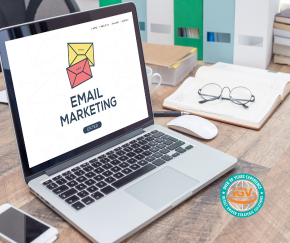
In today’s digital space, marketing trends and strategies tend to change with the blink of an eye. However, one strategy continues to question marketers: Is email marketing still effective? The short answer: yes, email marketing is not only alive but thriving, from small businesses to large corporations. Let’s explore why email marketing remains a cornerstone of successful marketing strategies, backed by data and real-world examples.
Despite the popularity of other digital marketing channels such as social media, email marketing stands tall as one of the most effective and reliable tools for businesses. According to recent studies, email marketing boasts an impressive return on investment (ROI) and conversion rates, outperforming many other marketing tactics.
For example, a report by the Data & Marketing Association (DMA) found that email marketing has an average ROI of $42 for every $1 spent, making it one of the highest-performing marketing channels available. Additionally, research from Campaign Monitor indicates that personalized email messages generate 6 times higher conversion rates than non-personalized messages.
What sets email marketing apart is its adaptability and versatility. With advancements in technology, businesses can now leverage email automation, personalization, and segmentation to deliver highly targeted and engaging content to their audience. This level of customization ensures that emails connect with recipients in a more personal manner, driving higher engagement and conversions.
To gauge the effectiveness of your email marketing efforts, it’s essential to track key metrics. Clickthrough Rate (CTR), Open Rate, Conversion Rate, List Growth Rate, and Unsubscribes are some of the critical metrics that provide insights into the performance of your email campaigns. So what do these metrics mean?

Beyond the metrics, email marketing offers several advantages that businesses should capitalize on to increase overall growth opportunities for their company:

One of the key benefits of email marketing is its ability to deliver immediate results. Unlike traditional marketing methods that may take weeks or even months to show outcomes, email campaigns can generate responses almost instantly. This rapid feedback allows businesses to assess the effectiveness of their strategies and make real-time adjustments to optimize performance.
The immediacy of email marketing allows businesses to conduct A/B testing with ease. By testing different variations of subject lines, content, and call-to-action buttons, marketers can identify what resonates best with their audience and refine their approach accordingly. This best practice ensures that email campaigns are continually improving, leading to higher engagement rates and ultimately, a better return on investment.
By strategically including links to your website within your emails, you can drive traffic directly to your site. Whether you are promoting new products, blog posts, or special offers, email marketing serves as a powerful tool to increase website visibility and traffic, leading to more opportunities.
Regular communication via email enables stronger relationships with your audience. By delivering relevant and valuable content directly to their inboxes, businesses can grow trust and loyalty among their customers. This increased engagement not only drives repeat business but also encourages referrals to others.
Although the digital space is innovating and changing every day, email marketing continues to prove its effectiveness as a vital component of any successful marketing strategy. Whether you’re a small business or a large corporation, leveraging email marketing can help you reach and engage your audience effectively.
Ready to take your email marketing to the next level? Contact us at IGV to learn how Constant Contact can help you achieve your marketing goals. And if you’re ready to get started, sign up here to experience the power of email marketing for yourself.